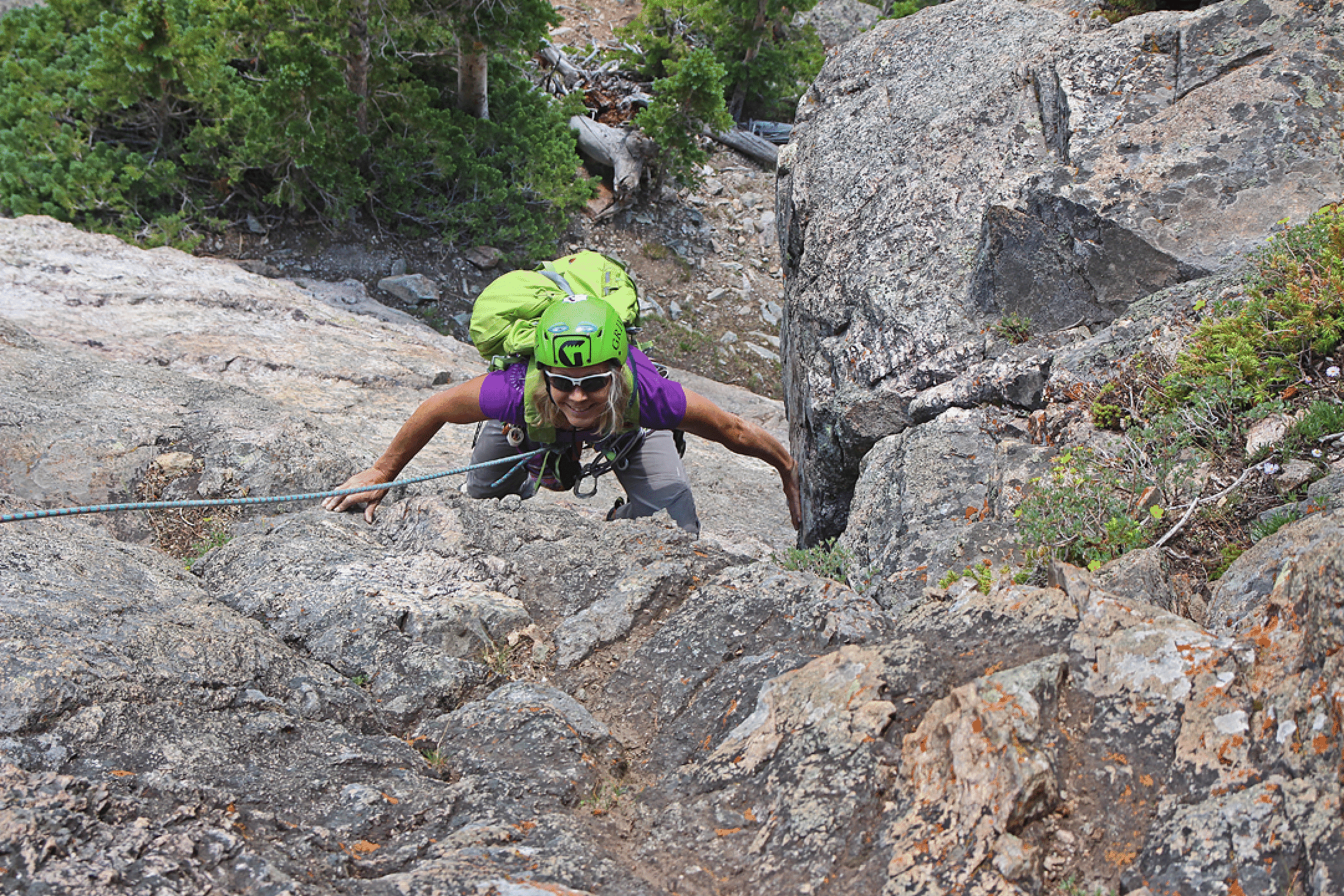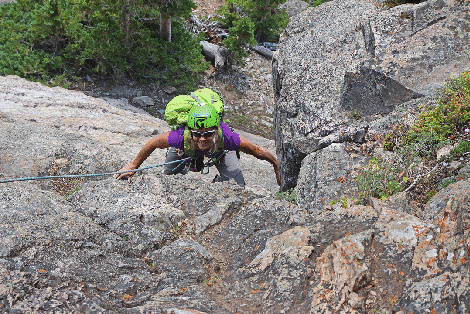 Waterfall Buttress, East Red (5.6+, R)
Waterfall Buttress, East Red (5.6+, R)
 Waterfall Buttress, East Red (5.6+, R)
Waterfall Buttress, East Red (5.6+, R)
This is my name for the imposing rock buttress about 1/3 mile N of the Gore Trail where the trail flattens out above S Willow Falls. I have climbed it four times: the first time, with Jim Koegel, we went left of the prominent overhang that guards the top. The second time, with Jonathan Kriegel, we went to the right. In both cases the hardest pitch is the final pitch. On Sept. 15, 2016, a beautiful fall-like day with new snow on the north faces, Katie Larson and I did the route. I led all six pitches. On the last pitch (right of overhang), it took me a while to realize I must leave the dihedral and make progress out on the face to the right. Going right was no problem on great footholds. Coming back left was a bit thin with little for the hands, but adequate depressions for the feet. Protection is generally poor on this short crux section; just barely adequate. And in July 2017 I did the right-and version yet again, but this time we took a steeper line and the whole thing was 4 pitches, with the 3rd pitch being quite short.
Waterfall Buttress on East Red. The start angles from right to left (3 pitches). Then straight up to the trees (2 pitches and some walking). The finish has a short easy pitch, and then the final pitch (the crux) is just right of the dark alcove. One can also finish well to the left of the alcove, and I think it is harder (5.7). The first photo is a view from the slopes of Buffalo across the valley. The easiest start is at the right, under the pink rock. Second photo by Katie Larson.
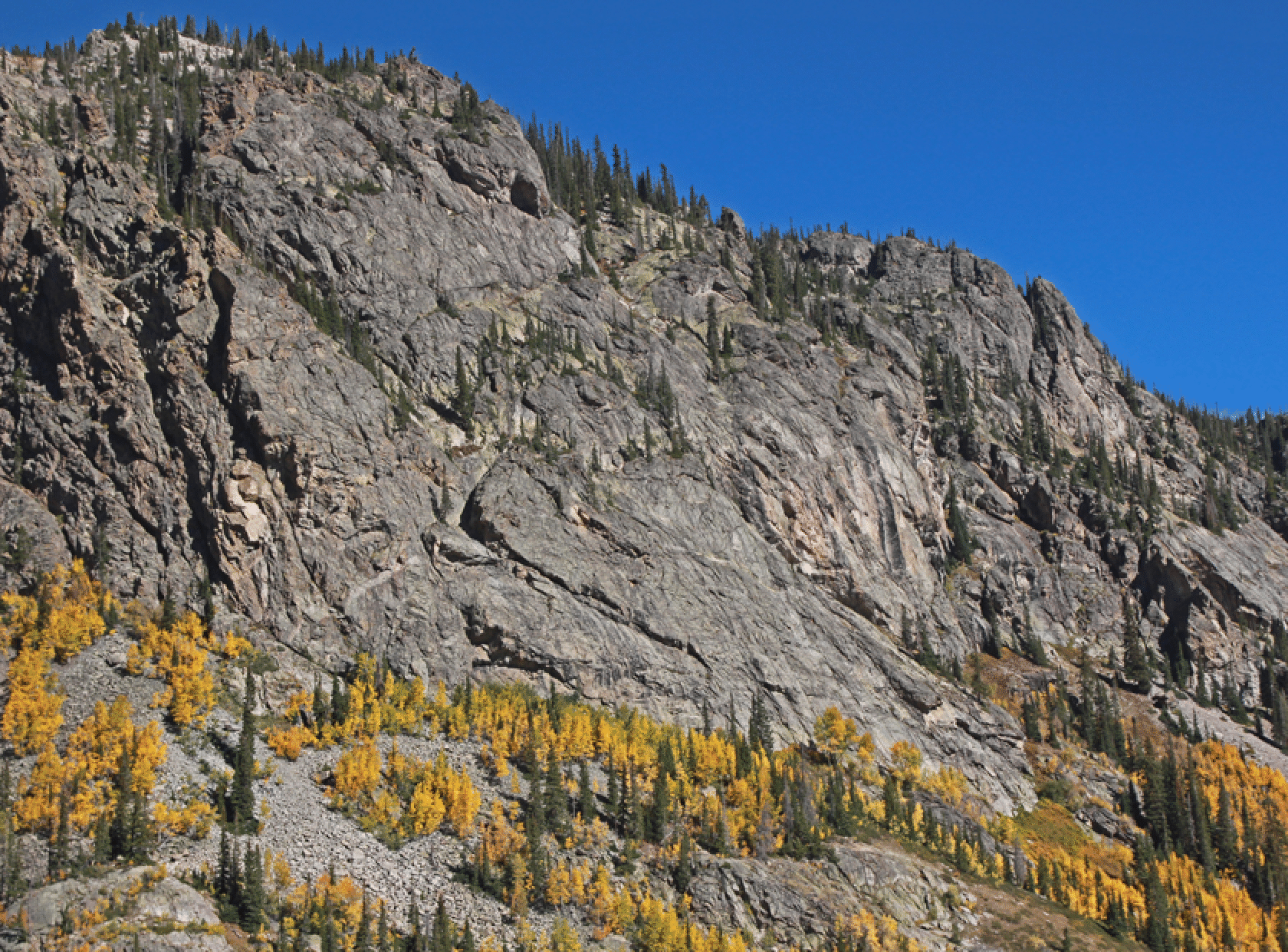

The rock was beautiful, but cracks were rare. This route faces south and east so the overnight snow (see Buffalo on left) had melted for our climb. Photo by Katie Larson.
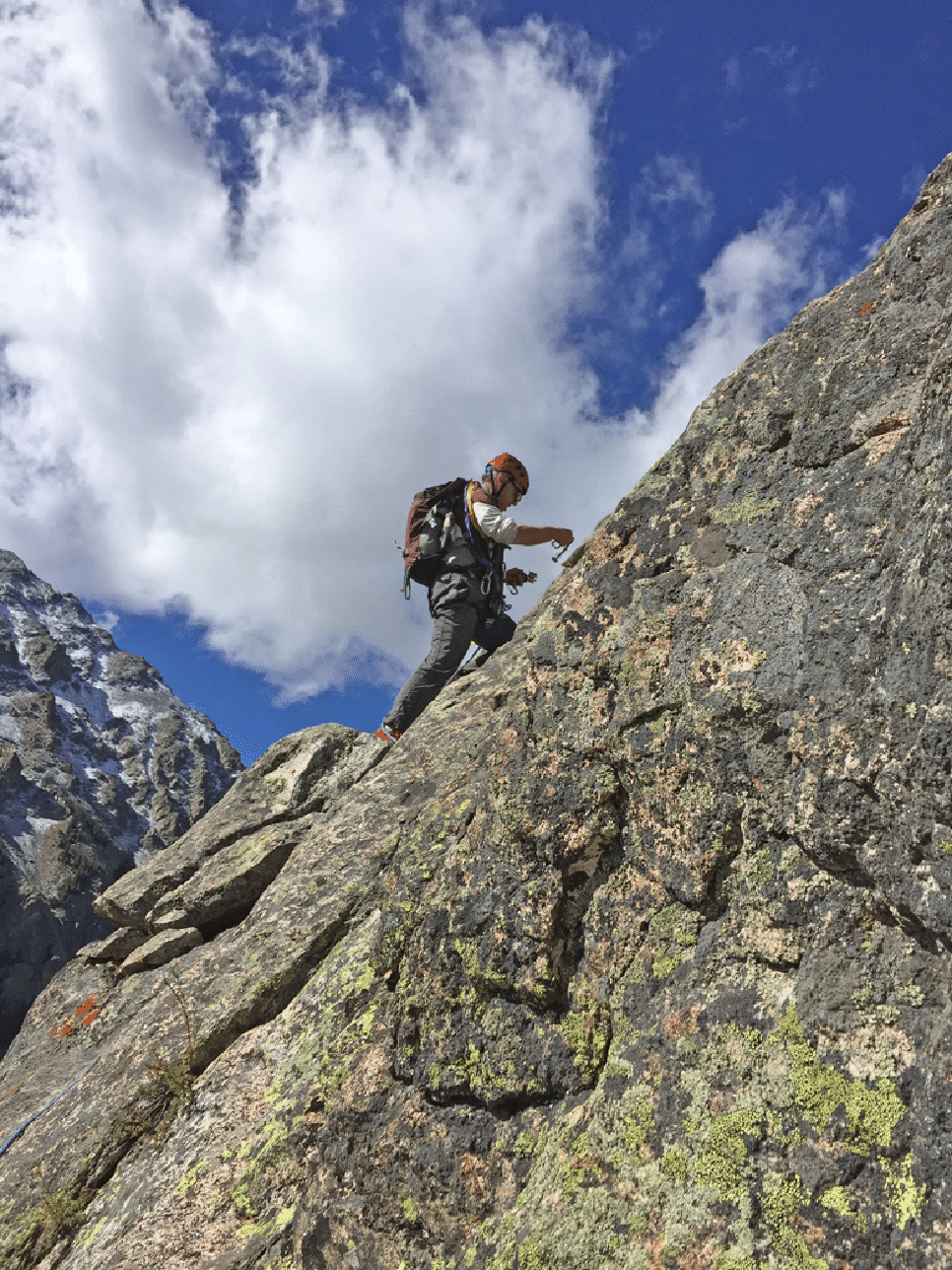
Stan on the crux, at the very end of the climb. I had to get some protection in the crack and a small bomber nut worked here. Then, a little higher, I had to work hard to get a good large cam placement. And I got distracted trying to pull straight up in the dihedral, but that did not work. Finally I spotted the good footholds out to the right onto the face, where there were some thin but solid (if unprotected) moves back to easier ground near the dihedral. A solid cam there and some easy moves to the trees and that wonderful topping-out feeling hit me hard! This is steeper than it looks in the picture and definitely got my attention. Photo by Katie Larson.
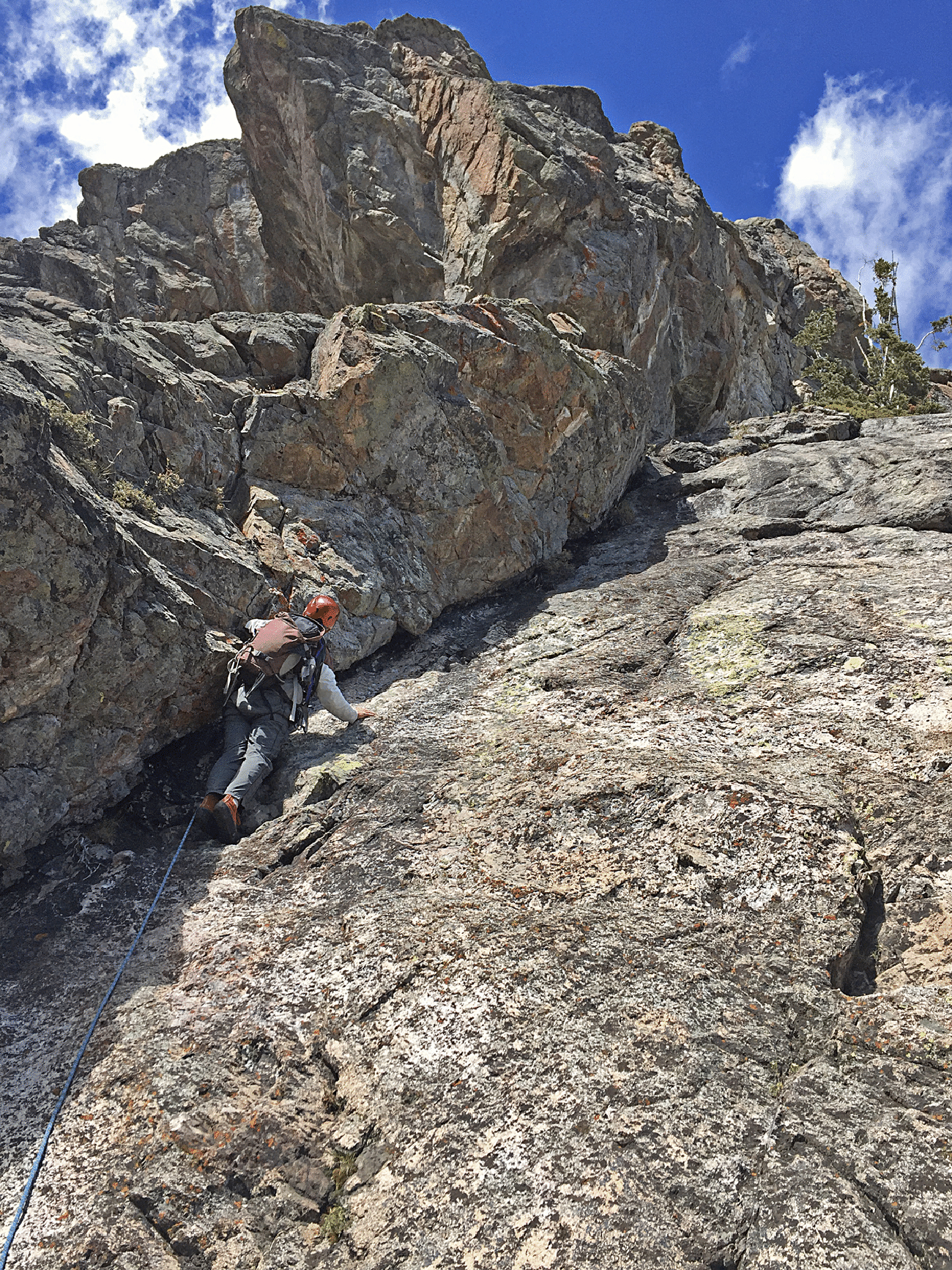
This shot from across the valley shows the finish of the climb. Our finish was via the whitish rock below and right of the large shadowed alcove. A harder alternative is to go under the overhang to the left and up.
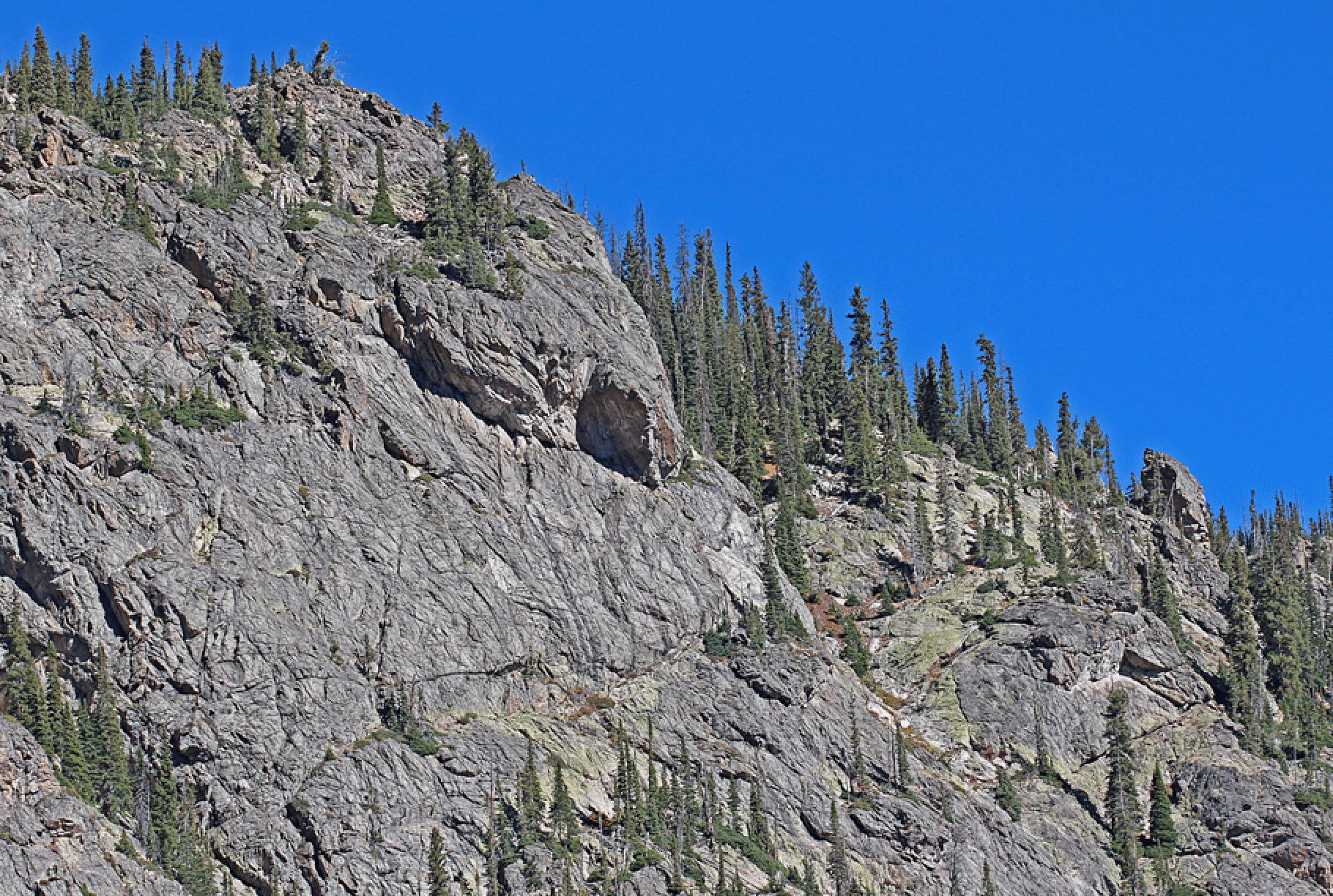
On July 8, 2017, Kim Clark, Eric Lashinsky, and I did the route. Kim and Eric wanted leading practice, so they led it all. Stupidly, I had forgotten my harness, so we rigged something with slings. Kim led the first pitch and after the first short section she went up more steeply than I had done in the past; 5.6. Then Eric led up and by the end of pitch 2 we were at a spot with an old sling that had taken me 4 pitches to reach in the past. This steeper way was much more direct, and the climbing was fine. Kim then led a short pitch that was very similar to the penultimate pitch from last year. We then walked it up to the final belay, and Eric led that. Eric went up the dihedral the whole way (5.7). I followed but took the face route that I had taken before. Kim followed the way Eric went. So the whole thing went at 4 pitches; very efficient. On descent we headed down a gully but got cliffed out. There was a sling around a tree, so we rappelled from there, but it was a long, somewhat blind rappel, and it was with relief that I finally saw that the ropes reached the easy ground. This was a long steep rappel: we used a 60 meter and a 50 meter rope. Two 50s might have been problematic. Total time: 6 am -> 3 pm. From the end of the climb it is worth climbing up 100 feet to the top of the knoll, as there is a reliable patch of snow up there for refilling bottles.
Here is Kim starting out on pitch 3.
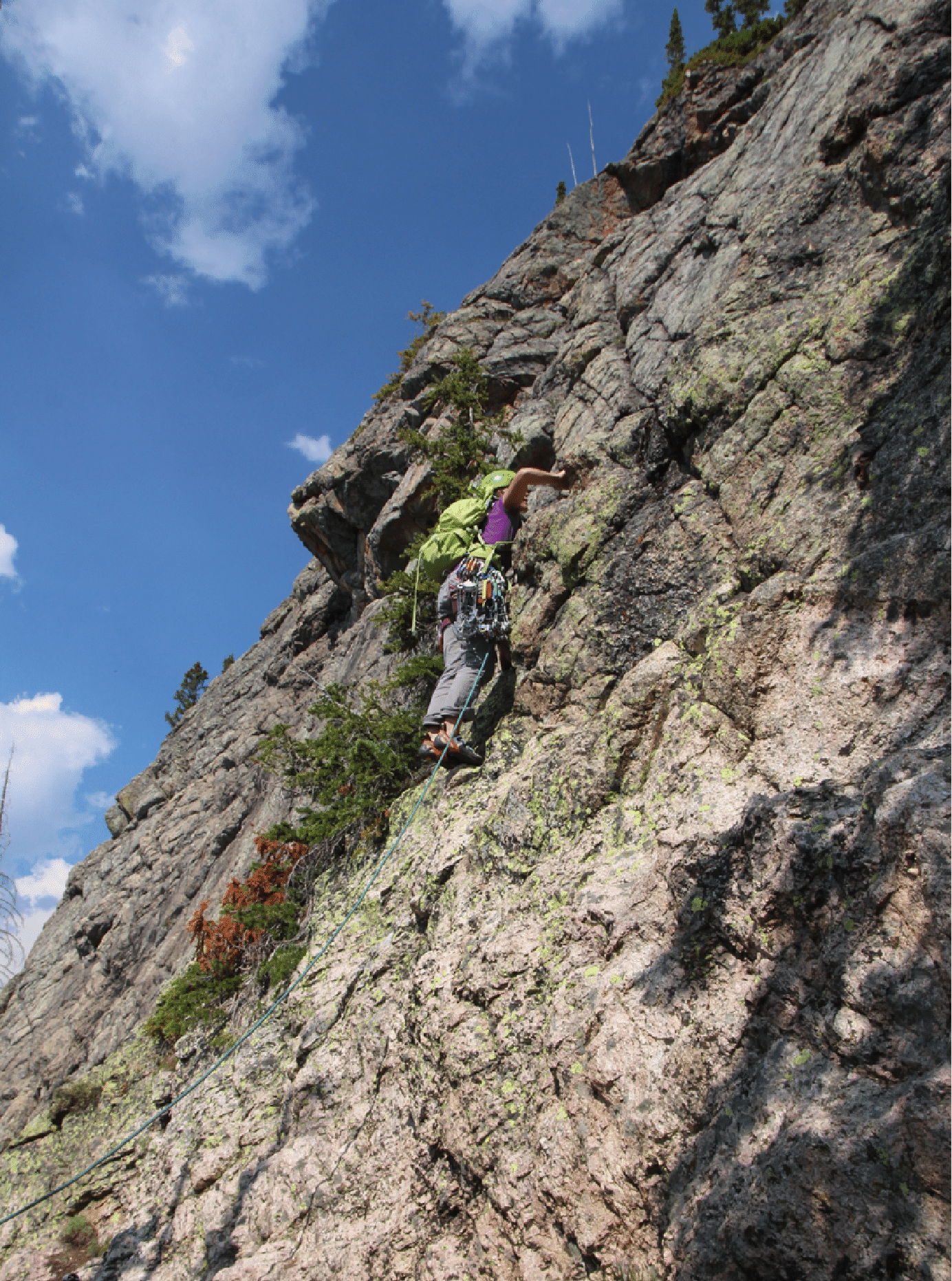
Here is Kim just past the crux move on the crux pitch, about to reach the end of the climb.
